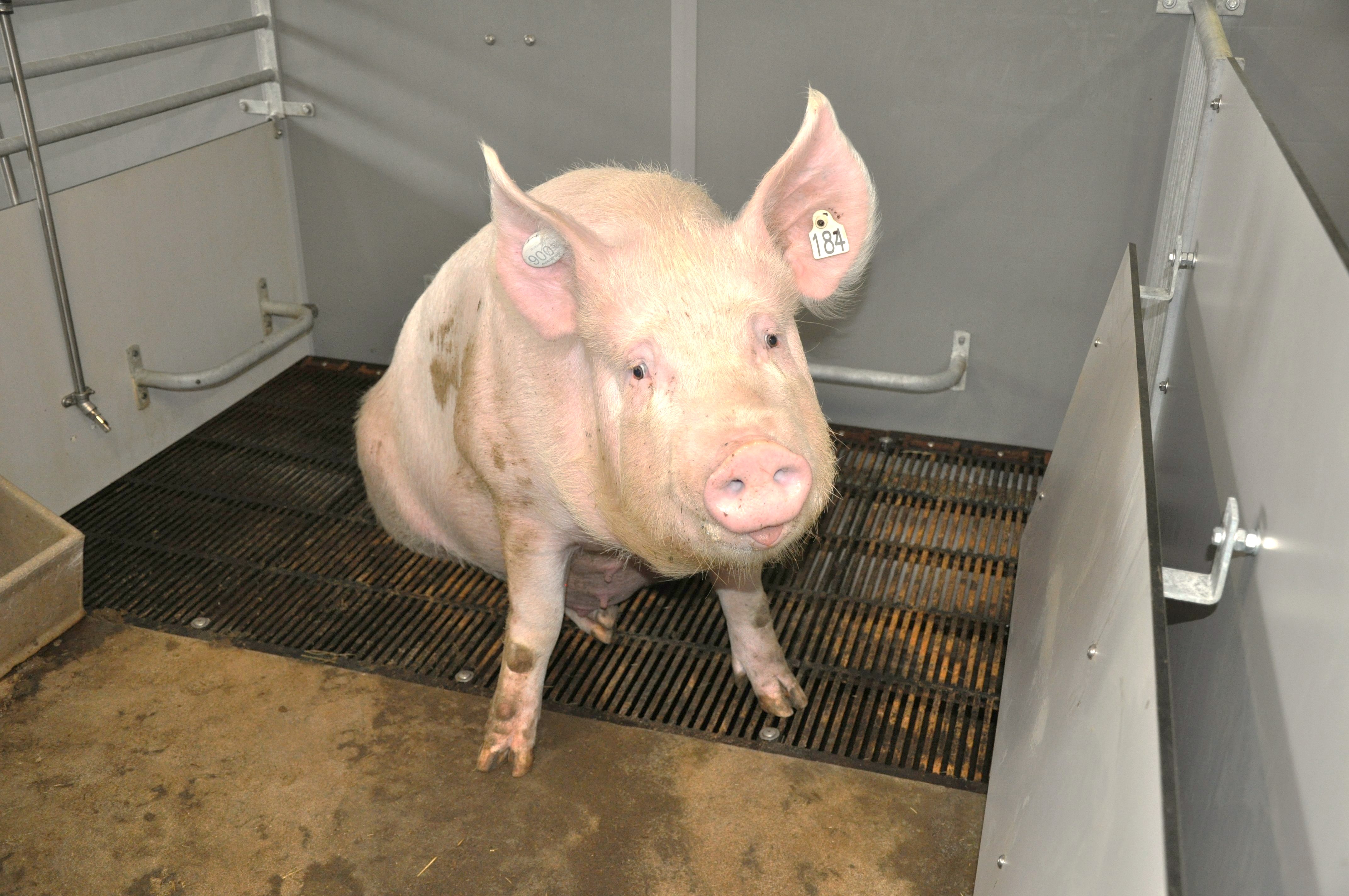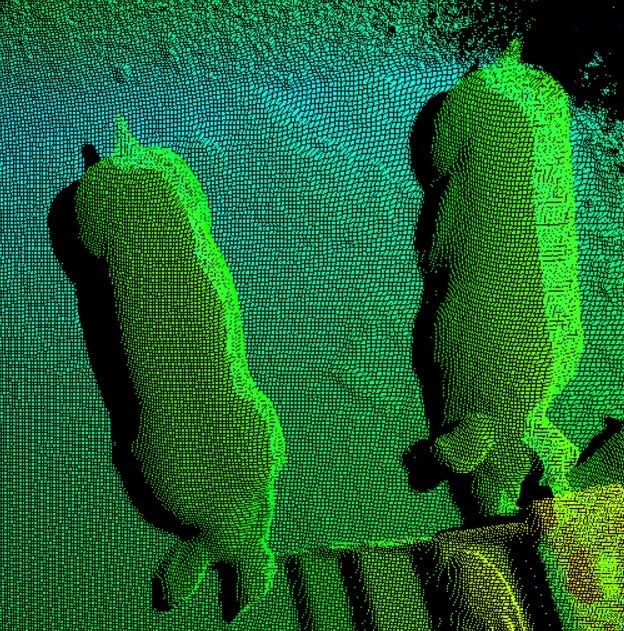



Smart farming revolution hits the pig sector
Take a look at some of the technological trends boosting productivity in pig farming.The Smart farming revolution
Some of today’s farmers will still remember the time before the technological revolution in the 1940’s when tractors were introduced. Back then it may have seemed surreal to think that much of the human labour would be replaced by machines, but it was. Similarly, the Smart Farming revolution that is happening now may seem a distant future for many, but has already become reality for some. A new generation of farms is on the horizon, with larger herds managed by high-tech equipment that records animals’ actions with a precision that can exceed human performance in many aspects.
Precision technology
Precision livestock farming, or PLF, is the use of advanced technologies to manage livestock more precisely on an individual or group level. This can, amongst other things, be used to optimise individual feeding rates, to monitor weight and health, or to observe behaviour. The type of applied technology widely varies and is partly dependent on the animal. Cattle for example can be easily equipped with wearable sensors on their legs or in a collar, whereas it is more labour effective to monitor the whole flock with poultry. Pigs take the middle ground and systems are constantly developing for precision group management as well as highly individualised recordings. Various systems have already made their way into farms. It is commonplace to see electronic feeders and automatic weighing and sorting systems for pigs on larger farms. Unique ear tag systems are also popular for continuous recording and monitoring of pig movement; feeding duration, frequency and amount; or whether the animal has been located into a new pen.
Developments in the pig sector
Feeding, weighing and sorting systems for large groups of pigs are proving their functionality and are increasingly implemented. Now the first steps have been made, more challenging designs are being explored to gain information on pigs’ productivity, behaviour and welfare.
The advances are strongly driven by China, being the country with most pigs in the world as well as having a strong focus on technology and automatisation for mass production. Several companies have set their mind on creating technology-driven pig farms. Yingzi Technology has recently launched its Future Pig Farm platform and Alibaba (China’s e-commerce giant) has its software engineers set on automatic recognition of pig faces. Both are investing in technology for their pig production companies and have chosen face recognition as one of the features to be integrated on their mega farms.
Important life and productivity data, such as daily weight gain and farrowing success, is recorded or viewed by holding a smartphone in front of the sows’ face. In large herds this would be more efficient and reliable than keeping paper work, certainly when it concerns several thousands of sows per farm.
This said, China is not the only driving force for the technological revolution in the pig industry. Various companies in Europe, the US and Canada are actively researching possibilities and supplying farms with their technology. The main areas that are currently being investigated for pigs are wearable sensors, sound detection and the use of cameras.
Wearable sensors
Pigs are inquisitive and destructive which generally means that anything artificially attached to their body is likely to be damaged. This has made the development of wearable sensors for pigs more complicated than for other livestock. Recent advances in technology have allowed accelerometers to be built into ear tags, allowing for detection of location and locomotion. Ear tags with built-in sensors, currently being developed by SmartBow, are suitable for sows but fairly large for young pigs. As sensors are becoming more compact and more affordable, it is becoming increasingly realistic that all types of animals can be equipped with such technology.

© Kristina Maschat
Sound detection
A promising system that is currently available is sound detection in groups of pigs. The SoundTalks system, for example, recognises coughs and provides an alert to the unit manager when the number of coughs indicates that animals would benefit from treatment. SoundTalks, a spin-off company from a research project, has taken this to the market with a robust farm version. With just a portable device and a microphone, this really brings PLF closer to implementation on any farm.
Cameras
Cameras have been integrated into existing systems for weighing, sorting and counting. The Canadian company Ro-Main have invested in developing a variety of camera systems, one of which being PigWatch, a sow oestrus detection system.
Regarding behaviour and welfare, an exciting UK-based research project is investigating how tail posture can be monitored and analysed to aid with the prevention of tail biting outbreaks. Pigs have been shown to tuck their tails between their legs when they are a victim of tail biting. With the use of 3D cameras, researchers in Edinburgh have been able to predict an upcoming tail biting outbreak from the frequency of hanging tails in groups of pigs1. The researchers have now teamed up with industry partners, such as Innovate UK, to validate their technology on commercial farms. This would enable the development of a PLF tool to alert farmers to a potential tail biting outbreak and allow them to act before the event occurs. This would give farmers more confidence to leave tails intact and therefore improve the welfare of pigs.

© Emma Baxter, SRUC
Cameras have also been set up to automatically record locomotion, aggressive behaviour, resting behaviour and thermoregulation. The detection of behaviour with the use of algorithms is being actively researched but still needs to be extrapolated to a wider range of farm environments. Moreover, the costs of the behaviour would need to weigh up to the installation of cameras above pens. The applicability and potential of cameras should not be overlooked through, as smartphone cameras linked to apps can become a meaningful tool. For example, there is an app for iPhones and iPads that creates a thermal image, thereby providing instant information about the animal’s temperature. With the rising environmental temperatures, and pigs’ sensitivity to heat stress, this would definitely be a beneficial tool for any pig farm.
Is a smart farming future for everyone?
It is no surprise that people are voicing their doubts over the true value of bringing smart farming into pig units. Technology is certainly not immune to errors and updates are continuously required to ensure systems remain efficient and compatible. The pig sector is in the fortunate position of onlooker - not necessarily pioneering this technological revolution but following closely in the tracks of other livestock sectors. It is important to observe and learn which aspects of Smart Farming will most benefit the economy, the management of livestock, and the welfare of animals in the years to come.
| References | ||||
|---|---|---|---|---|
| 1 D’Eath, RB, Jack, M, Futro, A, Talbot, D, Zhu, Q, Barclay, D, & Baxter, EM. | ||||
| (2018) | Automatic early warning of tail biting in pigs: 3D cameras can detect lowered tail posture before an outbreak. PloS one, 13(4), e0194524. |









